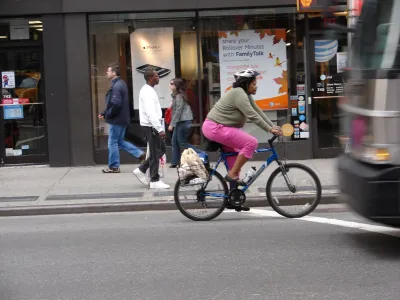In planning, a number of common principles of practice are widely accepted. However, an alternative set of guidelines can better serve as information and decision-making tools.

Joe Cortright says rules of thumb used in transportation and land use planning need to be reevaluated. "One of the problems with rules of thumb (or the more academic term, 'heuristics') is that while they may work well in many cases, they may work very poorly in others – and they may be subject to important cognitive biases that lead us to make bad decisions."
For example, the idea that levels of service and maximum vehicle throughput should guide street design has led to streets that are too wide and do not accommodate other modes as well as an inefficient hierarchy of roadways. Assumptions about parking requirements and trip generation estimates for particular land uses have also resulted in problematic outcomes, argues Cortright.
He offers a different set of heuristics: closer is better, slower is safer, and sharing is efficient. He also believes accessibility, not mobility, should be the priority. "Many transportation heuristics emphasize speed: how do we make things move faster. But what we really care about is getting to (or being at) our destinations, not rapidly traveling among them. Speed should be secondary to choice."
FULL STORY: When planning rules of thumb are “all thumbs”

National Parks Layoffs Will Cause Communities to Lose Billions
Thousands of essential park workers were laid off this week, just before the busy spring break season.

Retro-silient?: America’s First “Eco-burb,” The Woodlands Turns 50
A master-planned community north of Houston offers lessons on green infrastructure and resilient design, but falls short of its founder’s lofty affordability and walkability goals.

Delivering for America Plan Will Downgrade Mail Service in at Least 49.5 Percent of Zip Codes
Republican and Democrat lawmakers criticize the plan for its disproportionate negative impact on rural communities.

Test News Post 1
This is a summary

Test News Headline 46
Test for the image on the front page.

Balancing Bombs and Butterflies: How the National Guard Protects a Rare Species
The National Guard at Fort Indiantown Gap uses GIS technology and land management strategies to balance military training with conservation efforts, ensuring the survival of the rare eastern regal fritillary butterfly.
Urban Design for Planners 1: Software Tools
This six-course series explores essential urban design concepts using open source software and equips planners with the tools they need to participate fully in the urban design process.
Planning for Universal Design
Learn the tools for implementing Universal Design in planning regulations.
EMC Planning Group, Inc.
Planetizen
Planetizen
Mpact (formerly Rail~Volution)
Great Falls Development Authority, Inc.
HUDs Office of Policy Development and Research
NYU Wagner Graduate School of Public Service





























